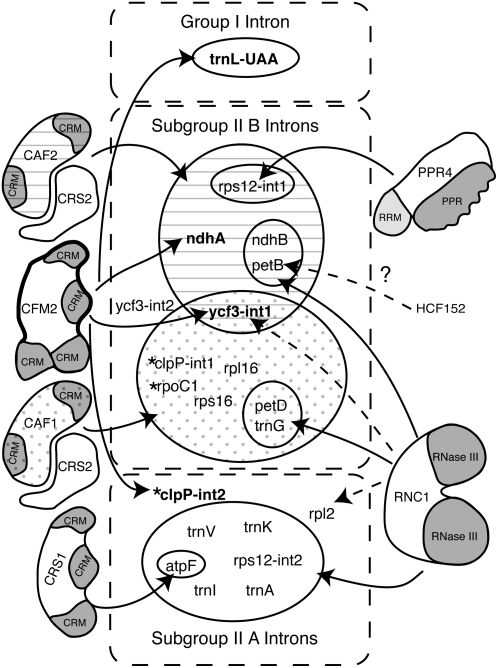Figure 8.
Chloroplast Splicing Factors and Their Intron Targets in Land Plants.
The group II introns in land plant chloroplasts are divided into subgroups IIA and IIB according to Michel et al. (1989). Those found in Arabidopsis but not in maize are marked with asterisks. Nucleus-encoded splicing factors, shown to the outside, are annotated with their conserved domains. Solid arrows mark interactions supported both by splicing defects in mutant backgrounds and by RNA coimmunoprecipitation data. Dashed arrows mark interactions supported by either genetic or coimmunoprecipitation data, but not both. Where analyzed (this work; Asakura and Barkan, 2006), the functions of these proteins are conserved between maize and Arabidopsis. A role for the plastid-encoded protein MatK in subgroup IIA splicing has been proposed but has not been confirmed (reviewed in Bonen and Vogel, 2001). HCF152 is an Arabidopsis protein that is required for the accumulation of spliced petB RNA but not for the accumulation of excised intron (Meierhoff et al., 2003). Results are summarized from this work and from Jenkins et al. (1997), Vogel et al. (1999), Till et al. (2001), Ostheimer et al. (2003), Schmitz-Linneweber et al. (2005, 2006), and Watkins et al. (2007).

